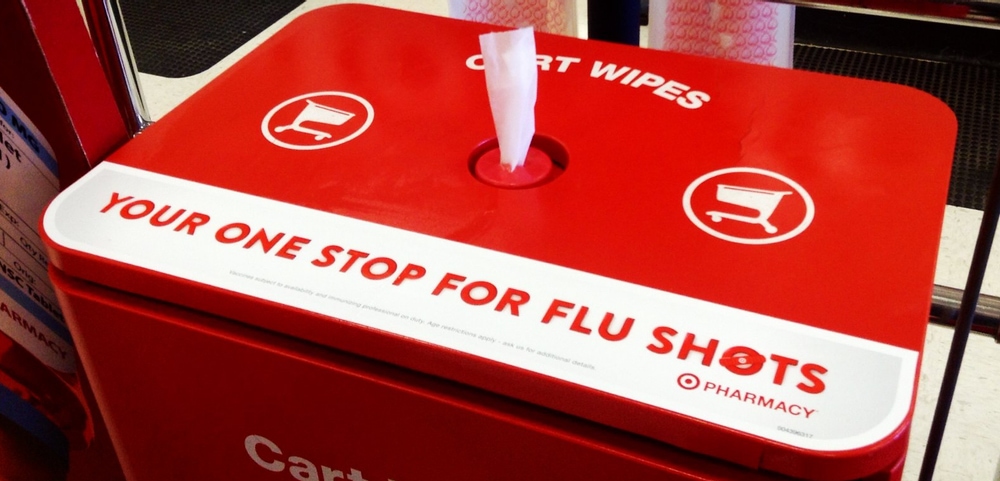- Last Week, the Oakland County Health Division reported the first flu-associated death in Michigan for the 2019-20 flu season. Although this year’s flu season appears to be off to a slow start, experts had previously forecast that it could be especially bad.
- While some might downplay the seriousness of the flu, it creates substantial costs for society. We all share the costs that come from increased health care utilization and diminished productivity, and yet the most vulnerable among us pay the greatest toll through the human costs of sickness and death.
- Flu season began October 1, but it’s not too late to get vaccinated. The seasonal vaccine remains our best defense against the flu (and the best way to mitigate influenza-related social and economic costs), but Michigan continues to fall below the national average in the proportion of residents who get vaccinated.
“To everything there is a season”— here in Michigan, this ecclesiastical wisdom translates into a time for snow and a time for road construction. There are, however, many other important seasons here in Michigan: football/basketball/baseball/hockey season, hunting season, honeycrisp apple season, and, of course, flu season.
In our 2018 report, “An Ounce of Prevention: What Public Health Means for Michigan,” we highlighted the fact that a majority of Michiganders skip a seasonal flu shot, even though influenza is a substantial source of morbidity and mortality. This creates risks and costs for every person in Michigan, including increased health care spending and missed work or school—to say nothing of avoidable hospitalizations and premature deaths. Policies that remove barriers to vaccination and increase the number of people getting flu shots should therefore be encouraged.
Health experts have warned that this flu season has the potential to be especially bad, although it is too early to tell when and how seasonal outbreaks may develop. Indeed, flu season has already turned deadly in Michigan with the Oakland County Health Division reporting a flu-associated death last week, and yet historical evidence suggests many will fail to heed warnings about the importance of getting a flu shot.

The burden of illness was very high during the 2017-18 flu season, with an estimated 48.8 million cases, 959,134 influenza-associated hospitalizations, and 79,416 influenza-associated deaths in the U.S. alone. This was the largest number of cases of influenza-associated illness since the 2009 H1N1 pandemic (when an estimated 60.8 million Americans were sickened). These recent examples should serve as reminders of how dangerous seasonal influenza can be, and yet the CDC estimated that only 37.1 percent of adults in the U.S. were vaccinated during the aforementioned 2017-18 season.
Today, a majority of our friends and neighbors in Michigan continue to avoid or neglect the seasonal flu vaccine each year. Michigan has a rate of vaccine utilization that falls well below the national average for both children and adults with as few as 3 out of every 10 Michiganders getting vaccinated. Some Michigan counties—particularly those with large proportions of low-income or rural residents—have even lower rates. Severe influenza requiring hospitalization is more prevalent in lower-income communities that not only have lower vaccination rates, but also poorer health overall. Other populations at greater risk for complications from the flu include the elderly, children under 5, pregnant women, and anyone with chronic medical conditions or immunosuppressive conditions.
Earlier this year, we highlighted that vaccine hesitancy is among the greatest threats to global health. While people typically conceptualize vaccine hesitancy with respect to parents’ perception of recommended childhood vaccines, we shouldn’t forget that it also affects people’s perception of flu shots. Research by RAND found that personal beliefs were a major driver of low flu vaccination rates, and that more than half of unvaccinated adults cited negative perceptions about the vaccine as the reason they did not receive it.

Making vaccines more convenient and readily available (such as increasing the number of workplaces or places of worship that offer them) could increase the state’s vaccination rate. This strategy may be most productive in rural areas where access to health care providers is often diminished.
Addressing individual and community anti-vaccine attitudes holds the greatest potential to increase the state’s vaccination rate. Multifaceted efforts are needed to counter misinformation and ease concerns or doubts. Given the prevalence of anti-vaccine sentiment, this will not be easy. While substantial resources are expended on making biomedical advances, these advances are of little value if the public resists them. More attention must be placed at the intersection of public health, marketing, and education to identify more effective strategies for engaging the general populace in public health efforts, particularly when it comes to preventative measures and/or health-enhancing behavioral changes.
MDHHS has several ongoing strategies to increase influenza vaccination rates, but, as with any effort, the effect of these strategies will be bounded in part by the limited resources dedicated to them. Many of these strategies rely on the cooperation of health care providers and organizations that work with high-risk populations; these collaborative strategies should be encouraged, but they require diligence in both cultivating and maintaining relationships, as well as measuring progress and outcomes (again, activities that require public health resources).
Of special note is the College and University Flu Vaccination Challenge, a program targeting healthy young adults (who often do not visit health care providers regularly, and who are generally difficult to reach through traditional modes of public health messaging). Yet, influenza vaccination rates in Michigan remain less than half of the Healthy People 2020 target of 70 percent for the adult population. Efforts should be redoubled by making public health a greater budgetary, administrative, and legislative priority.
Last year, we highlighted Michigan’s disinvestment in public health funding; current budget battles offer little hope that this trend will change in any meaningful way. It should be no surprise, therefore, that many of the Greatest Public Health Achievements of the 20th Century—immunizations, control of infectious diseases, reduction of tobacco use, and healthier mothers and babies—are no longer a given in Michigan.
We’ve said it before, and we’ll say it again: it’s time for Michigan to get serious about public health.

